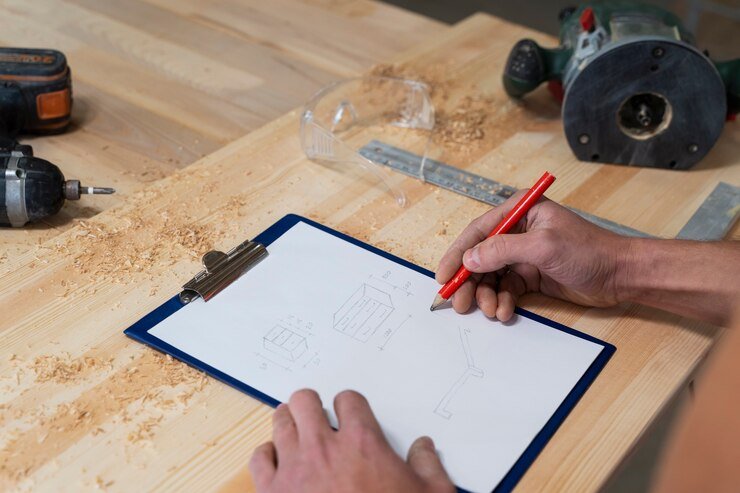Perhaps the scariest part of any home remodeling or building project is going to be handling rough plumbing codes. When you are renovating your kitchen or constructing a new home it is important to follow the building codes for your area so that nothing goes wrong after some time. The biggest challenge is understanding what codes apply to your project and how to meet them. Failing to comply with these codes can lead to delays, fines, and additional repairs. Luckily, this article will break down the key plumbing codes and requirements, and provide practical solutions to navigate these challenges successfully.
Let’s start with a quick tip to keep things simple: Check with your local building department to ensure you are following the correct codes for your area. This can save you from making rough plumbing mistakes that can become expensive to fix. Now, let’s dive deeper into what rough-in plumbing involves and the codes you should be aware of.
What is Rough-In Plumbing?
It’s important to clear up some confusion about what rough-in plumbing is before we get into the actual codes. Rough-in plumbing is quite as simple, the point at which the underlying plumbing lines, like water supply and drainage standard lines, are placed but not linked to fixtures. These shots take place after framing is done but before the drywall goes in.
This is important as it is the groundwork that will support the whole plumbing setup in the house to function properly once all fixtures are mounted.
Why Rough-In Plumbing is Important
Rough-in work is crucial for a number of reasons:
- This way, the plumbing system will accurately fit in with the design of your house.
- So many holes are innocent rather than costly mistakes but it makes for fairly simple inspection before the walls are sealed.
- Otherwise, not installing properly can result in leaking, and water pressure issues or may cause problems in draining later.
Now that you know what rough-in plumbing is let’s focus on the codes by which everything should be prearranged legally.
Key Rough-In Plumbing Codes
While each specific designation, pertaining to a region or state, may have different plumbing codes there are common baselines to be maintained everywhere alike. Let us go into some of the most important rough-in plumbing codes you should know.
1. Pipe Sizing
To give you an insight into what each code involves, we are going to take a look closely at the basic plumbing codes which will guide you through proper pipe sizing. For both water supply and drain pipes Water flow and water pressure directly depend upon how big those pipes are, so following the guidelines is very important. For instance:
- Water supply lines: The code calls for a 3/4-in. main water line and even a larger one if your home has more than, say, three bathrooms or traditional fixtures such as multiple showerheads, garden tubs, Body Jets, and widespread sprayers used at once in new codes being initiated today throughout the country.
- Drainage lines: Bathroom sink drains use a 1 1/4-inch pipe, while tub or shower drains use a 2-inch pipe.
If you happen to install your pipes at the wrong size, you can end up with not enough water pressure or even worse just drainage backup so it’s important to follow these standards.
2. Drain and Vent Requirements
A plumbing system that is designed well has a good method of properly draining and venting. A properly functioning system requires vent pipes to vent sewer gases and maintain proper air pressure within the drainage lines.
- Drain lines should have a slight slope (around 1/4 inch per foot) so that waste flows freely.
- Vent pipes are supposed to extend above the roofline as a requirement of code, for airflow and to avoid clogs.
Some of the common rough plumbing mistakes are ignoring venting requirements that often cause slow draining or bad odors and it sometimes constitutes a health hazard.
3. Fixture Placement and Spacing
Toilets to sinks — each fixture has its own spacing requirements. These rules are in place to make sure the fixtures are installed and work correctly after lockdown. General guidelines:
- Toilets: A minimum of 15 inches from the center of a toilet to any wall or fixture on either side.
- Sinks – need at least 4 inches away from a wall so you have room for plumbing connections
- Showers: Minimum Opening Twenty-four (24) inches
It is important to have these spacing requirements right for both usability and inspection approval.
4. Water Heater Installation
One other thing that can come up with rough plumbing is the code for the water heater. A good installation needs the proper place, venting, and safety features such as pressure relief valves. It is essential to follow local plumbing codes when installing your water heater to avoid risks.
5. Backflow Prevention
Backflow is the term for when pandemonium water hits clean water, and it poses a threat to public health. This is prevented by the use of a backflow prevention device which plumbing codes require. Common devices include:
- Manually activated in sink hand faucets, manually and passively in dishwashers.
- Check Valves: The check valves are utilized in irrigation systems as well as water heaters to stop the backflow.
6. Accessibility for Maintenance
Other essential parts such as shutoff valves, cleanouts, and pressure regulators also have to be easily accessible for servicing. These must be identified by means of suitable signs and also not impede daily morning or the use of appliances.
How to Ensure You Meet Plumbing Code Requirements
Following codes for rough plumbing can be intimidating, but there are ways you can make sure you stay compliant and do not fall into pitfalls.
1. Work with a Licensed Plumber
Salay licensed professional plumbers need to install your plumbing system and interpret the GFL cold in that area. They are experienced in these matters and can provide you with assistance on your difficult journey through the requirements.
2. Schedule Inspections
One of the simplest ways to make sure you are compliant with plumbing codes is having rough-in inspection effects on your calendar. Having a building inspector come to inspect the work ensures it all meets local codes and can save a world of headaches later.
3. Research Local Codes
Plumbing codes can differ greatly by area, so make sure you research the guidelines in your specific region. This is usually detailed on your local government’s website or for further information, you could contact your local building department.
Conclusion
Why Rough-In Plumbing Codes are So Important By Cherished Bliss Just like there are codes for the actual plumbing, you need to follow guidelines when it comes to rough-in plumbing. Whether you are installing it yourself or hiring a professional to set up your security systems, abiding by the code will save you time and money as well as some frustration in the future. From the size of pipes to how fixtures should be placed, everything affects functionality and safety in a plumbing system.
Be sure to verify local codes before you begin, and of course, have the work inspected to ensure that it meets the code. Recall: It truly is easy to get lost in the larger picture; it can be something as simple as proper venting of a waste and drain pipe, compound piping, or even a backflow prevention tool that makes this plumbing system so reputable.







